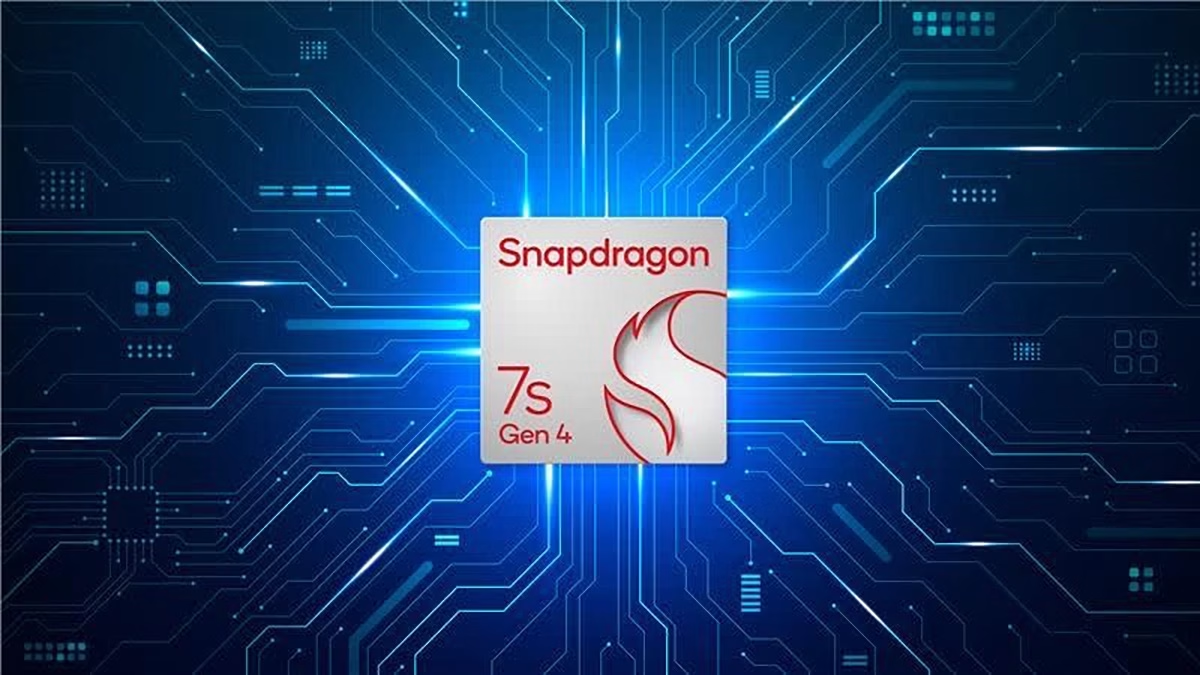Qualcomm Unveils Snapdragon 7s Gen 4: Modest Gains for the Mid-Range
Qualcomm has officially pulled back the curtain on its latest mid-range mobile platform, the Snapdragon 7s Gen 4. Announced today, this new System-on-Chip (SoC) is positioned to power the next wave of upper-mid-tier smartphones, offering what the company describes as "enhanced experiences" with, as the name implies, rather minor performance uplifts compared to its predecessors. It's not a revolutionary leap, but rather an evolutionary step, focusing on refining the user experience for everyday tasks and efficient power consumption.
This announcement comes at a time when the mid-range segment is more competitive than ever, with consumers demanding premium features without the flagship price tag. So, what exactly does the 7s Gen 4 bring to the table? Well, let's dive into the specifics, shall we?
Architectural Refinements and Core Configuration
At its heart, the Snapdragon 7s Gen 4 is built on a 4nm process technology, which is pretty standard for new chips these days. This advanced node helps with power efficiency, a crucial factor for mid-range devices where battery life is often a key selling point. The CPU architecture is where we see the "s" in "7s" really come into play. It features a Kryo CPU setup, but don't expect the same high-performance cores you'd find in the flagship 8-series. Instead, it's optimized for a balance of performance and efficiency.
Specifically, the 7s Gen 4 reportedly employs a 1+3+4 core configuration. We're talking one prime core clocked at up to 2.8 GHz, three performance cores at around 2.5 GHz, and four efficiency cores humming along at 1.9 GHz. Compared to the Snapdragon 7 Gen 3, the clock speeds see a slight bump, but the core configuration itself remains quite similar. This suggests that the "minor performance gains" aren't coming from a radical redesign, but more from frequency tweaks and perhaps some micro-architectural optimizations that aren't immediately obvious on paper. It's a chip that's designed for the everyday user, those who don't need the absolute bleeding edge, but still wants a smooth experience.
Graphics and AI Capabilities
On the graphics front, the Snapdragon 7s Gen 4 integrates an Adreno GPU. Qualcomm hasn't detailed the exact model or its performance uplift in percentage terms, but industry whispers suggest a modest improvement over the Adreno 720 found in the 7 Gen 3. We're likely looking at a 5-10% gain in graphical horsepower, which is enough to handle popular mobile games at respectable frame rates, albeit not at the highest settings. For most users, this means a fluid UI, decent gaming, and smooth media consumption. Nothing groundbreaking, but certainly competent.
The AI Engine also sees an upgrade, though again, the focus seems to be on efficiency and broader support for on-device AI features rather than raw computational power. We're talking about faster processing for things like image enhancements, voice recognition, and perhaps some generative AI tasks that are becoming more common on smartphones. It's about making those features snappier and more reliable, not necessarily enabling entirely new AI paradigms on a mid-range device.
Connectivity and Multimedia Enhancements
Connectivity is always a strong suit for Qualcomm, and the 7s Gen 4 is no exception. It comes equipped with the Snapdragon X63 5G Modem-RF System, offering robust 5G connectivity across a wide range of bands. This is crucial for global market adoption, ensuring devices powered by this chip will work reliably almost anywhere. Furthermore, it supports Wi-Fi 6E and Bluetooth 5.3, providing fast and stable wireless connections. Wi-Fi 7 isn't here yet for this tier, which is understandable.
For multimedia, the new SoC supports up to a 200MP camera sensor, 4K HDR video capture, and high refresh rate displays (up to FHD+ at 144Hz or QHD+ at 90Hz). These are solid capabilities for the mid-range, allowing manufacturers to build devices with impressive camera specs and fluid screens without breaking the bank. The image signal processor (ISP) likely benefits from the AI Engine's enhancements, leading to better computational photography results.
Market Positioning and Implications
So, where does the Snapdragon 7s Gen 4 fit into the grand scheme of things? It's clearly designed to slot in below the more powerful Snapdragon 7+ Gen 2 and the newer 7 Gen 3, serving as a slightly more affordable, yet still highly capable, option for manufacturers. It's a chip that prioritizes power efficiency and a consistent user experience over raw benchmark scores. This strategy allows Qualcomm to offer a tiered lineup, catering to different price points within the competitive mid-range segment.
For consumers, this means more choice. Devices featuring the 7s Gen 4 will likely offer excellent battery life and smooth performance for daily tasks, social media, and casual gaming. They won't be setting any speed records, but they'll be reliable workhorses. Think of it as the dependable sedan of the smartphone world – not a race car, but it gets you where you need to go comfortably and efficiently. We've seen this play out before, haven't we? Where incremental updates often lead to more refined, stable products in the long run.
Competition and Future Outlook
The mid-range market is a battleground, with MediaTek's Dimensity series posing a significant challenge to Qualcomm. The Dimensity 8300, for instance, offers quite a punch in this segment. The 7s Gen 4's success will largely depend on its pricing and how aggressively OEMs adopt it. If it allows for more affordable devices with a "Snapdragon" badge, it could certainly carve out a niche.
Looking ahead, we'll start seeing devices powered by the Snapdragon 7s Gen 4 hitting the market in the coming months. It'll be interesting to see which manufacturers jump on board first and how they leverage the chip's capabilities. While the performance gains are indeed minor, this chip reinforces Qualcomm's commitment to providing a diverse portfolio across all smartphone tiers. It's not about flash, but about consistent, reliable performance for the masses. And sometimes, that's exactly what the market needs.
